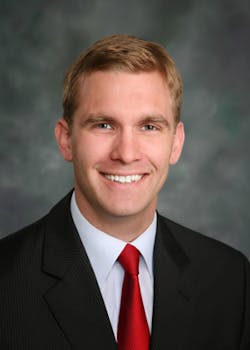Aviation interest groups – particularly those like ARSA with a strong concern for the maintenance workforce – have spent a lot of time talking about the challenge of finding and retaining technical talent. After a while, the conversation becomes very familiar. When meeting with lawmakers, industry advocates, or government officials, you don’t have to get too far into describing the issue before being hurriedly assured that your conversation partner gets it.
And they do, because they’ve heard the same story from every industry that depends on skilled workers: It’s getting harder and harder to find new applicants to replace a quickly aging labor force and younger technicians and engineers already working are less likely to stay put than their predecessors.
Why do we spend so much time telling people what they already know? Why do we constantly reinforce that there’s a looming crisis in the aviation workforce?
Because we have to. Illustrating a problem repeatedly is the only way to move toward action. The story also gets better with each telling, as more data, different perspectives, and more-pressing examples become available to support the central point that we need more people.
When this year’s attendees arrived for ARSA’s 2018 Symposium Week, dozens headed to Capitol Hill to update their members of Congress on the issues that matter to repair stations. As usual, they were prepped with good data provided to ARSA by Oliver Wyman’s CAVOK division in the form of the 2018 Global Fleet & MRO Market Assessment. According to the U.S.-specific analysis provided to ARSA members through the report, there are 275,000 American workers in the aviation maintenance industry contributing $44 billion to the nation’s economy and helping to ensure the safety of civil aircraft operating worldwide right now.
CAVOK projects that new technologies, a rising global middle class, and expanding fleets will drive the global aircraft maintenance market well beyond $100 billion in the next decade. However, demand for technicians will outstrip supply beginning in 2022; by 2028, the available workforce will fall 9 percent short of the number needed by employers. Realizing growth opportunity is difficult without people to do the work.
ARSA’s own data suggests the impact is already being felt: More than 80 percent of respondents to the association’s 2018 member survey report difficulty finding qualified technicians and half of respondents have unfilled positions. As a result, companies say it is taking longer to complete work for customers, that they are not adding new technical capabilities, and in some cases are turning down new business. Last year, we projected that the inability to fill open vacancies could already be costing repair stations $2 billion a year. Considering the fact that we’re not even “short” of workers yet, it’s pretty clear we’re already in crisis.
The numbers provided to symposium attendees fit into the same narrative as those in reports by other industry and media organizations, including Boeing and Airbus, for years. In February, the club of publications describing a workforce shortage was joined by our colleagues at Helicopter Association International. HAI projects the rotorcraft industry alone will fall more than 40,000 technicians short of the industry’s need between now and 2038.
The good news for ARSA’s participants on the Hill – and for all of our aviation allies – is that they had an answer to the inevitable question: What do we do about it?
Help us pilot an aviation maintenance workforce development grant program.
The program was laid out in legislation introduced on March 7 by a bipartisan group of U.S. senators. The bill authored by Senators James Inhofe (R-OK), Richard Blumenthal (D-CT), Jerry Moran (R-KS) and Maria Cantwell (D-WA) would establish a program to train maintenance professionals, help veterans transition to civilian careers, and recruit new technicians. Grants of up to $500,000 per year would be available to businesses or unions, schools, and governmental entities that partner to pursue creative solutions to one of the aviation community’s most pressing strategic challenges.
Given the scale of the threat, 17 leading aviation organizations joined a letter coordinated by ARSA in support of the bill and delivered to the sponsoring senators on March 5. Armed with all this information and supported by the months of ARSA groundwork in developing the grant program alongside Sen. Inhofe’s office and then building support for it with maintenance providers, manufacturers, operators, and labor organizations, the aviation professionals on the Hill in March had one of the first concrete, albeit humble, steps toward turning the trend identified by CAVOK, HAI, and so many others around.
ARSA and its allies are working to gather additional sponsors to the Senate bill and get a companion to it introduced in the House. Stay tuned as the process, which will hopefully take advantage of the FAA bill’s expected progress through Congress this summer, continues.
We’ve gotten good at telling each other what we already know … it’s a nice change to know something can be done about it.
To see everything that happened at Legislative Day and throughout ARSA’s 2018 Symposium Week, visit arsa.org/symposium.
Brett Levanto is vice president of operations of Obadal, Filler, MacLeod & Klein, P.L.C. managing firm and client communications in conjunction with regulatory and legislative policy initiatives. He provides strategic and logistical support for the Aeronautical Repair Station Association.
About the Author
Brett Levanto
Brett Levanto is vice president operation for the Aeronautical Repair Station Association (ARSA). He graduated from the George Washington University in 2004 and earned a Master of Public Policy from the College of William and Mary in 2009. For more information visit www.arsa.org.

